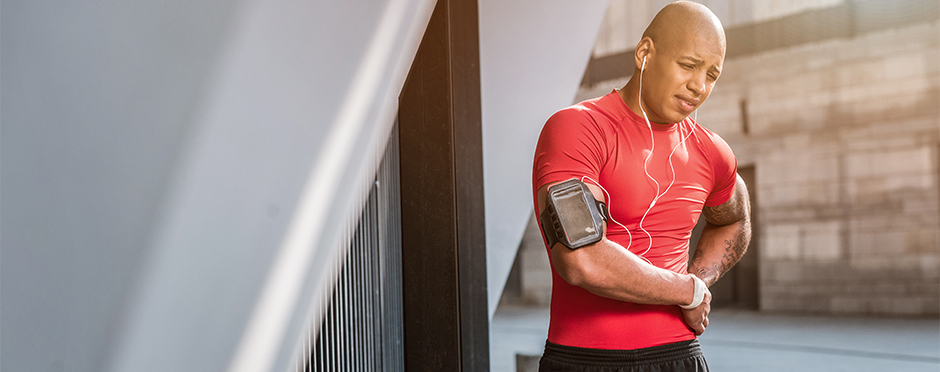
The Hip: The Forgotten Joint
Leave a CommentAlthough it’s one of the biggest and most important joints in the human body, the hip joint is sometimes overlooked when evaluating, treating and diagnosing musculoskeletal conditions. With normal movement patterning, the hip is used heavily for bending, twisting, rotating and propelling forward. Mechanical breakdowns will occur if the hip is unable to function at peak efficiency, often at other segments like the knee or lumbar spine.
Did you know that in August of 2015, Green Bay Packers’ wide receiver, Jordy Nelson, tore his ACL in a preseason game? Did you also know that five months prior to tearing his left ACL, he had surgery on the same hip?1 Certain hip deficiencies – especially weakness in hip abduction and external rotation – may lead to an increased risk of major knee injuries, including ACL tears.2 In the case of Jordy Nelson, increased hip stiffness or lack of a full return of strength after hip surgery months prior may have been a factor in his torn ACL, which is an injury that cost him the entire 2015 season.
In addition to traumatic knee injuries, hip deficiencies may also cause spontaneous knee pain. For example, increased hip adduction (knock-kneed posture) with runners may lead to Iliotibial Band Syndrome (IT band syndrome).3 IT band syndrome is an overstretching of the IT band upon impact, which increases stress at or near its attachment on the outside of the knee. The onset of pain is usually on the outside of the knee, shin, or thigh, and pain increases over time and/or with increased activity. Increased hip strength in a lateral or outward motion (hip abduction) would reduce the risk of a knock-kneed posture with running, thus reducing knee and IT band stress.
Posture and core strength often get the bulk of the blame for low back pain. However, virtually all hip musculature attaches to the pelvis and plays a large role in determining posture and lower spinal stability. Weakness in the gluteus maximus muscles will result in an anterior pelvic tilt and subsequent increased low back extended posture.2 Tight anterior hip musculature can produce the exact same postural abnormalities. Therefore, hip extension range of motion and strength is imperative for proper pelvic alignment and decreasing stress on the low back.
Whether you are a high level athlete, weekend warrior or simply someone who suffers from low back or knee pain, hip mobility and strength should be closely examined when considering treatment for your musculoskeletal condition. Stop in to your local Athletico for a free assessment to see if your hip could be the root of your problems.
Free assessments are available in-clinic and virtually through our telehealth platform.
The Athletico blog is an educational resource written by Athletico employees. Athletico bloggers are licensed professionals who abide by the code of ethics outlined by their respective professional associations. The content published in blog posts represents the opinion of the individual author based on their expertise and experience. The content provided in this blog is for informational purposes only, does not constitute medical advice and should not be relied on for making personal health decisions.
References:
1. Silverstein, Tom. “Jordy Nelson Will Miss Rest of Season with Torn ACL.” Milwaukee Journal Sentinel, 24 Aug. 2015, archive.jsonline.com/blogs/sports/322734501.html.
2. Khayambashi, Khalil, et al. “Hip Muscle Strength Predicts Noncontact Anterior Cruciate Ligament Injury in Male and Female Athletes.” The American Journal of Sports Medicine, vol. 44, no. 2, 2015, pp. 355–361., doi:10.1177/0363546515616237.
3. Powers, Christopher M. “The Influence of Abnormal Hip Mechanics on Knee Injury: A Biomechanical Perspective.” Journal of Orthopaedic & Sports Physical Therapy, vol. 40, no. 2, 2010, pp. 42–51., doi:10.2519/jospt.2010.3337.
